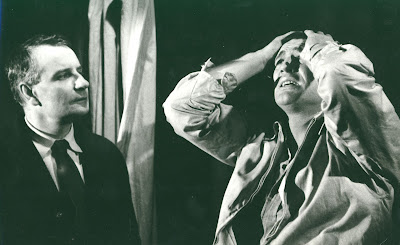I should change the title to first six weeks as I started writing this post ages ago - as visitors to my blog will know my posts have been far from regular recently! With the move to London and the new job I seem to have got rather behind with my postings. My new job is just what I was looking for as it is a post as a film cataloguer. I knew when I did my Masters in Archives that I was interested in working in a film and sound archive but I think what I hadn’t was expected was just how much I have loved all my jobs since I qualified! I would consider myself a pretty positive person most of the time anyway but I can’t imagine how anyone could get bored with the variety of material you get to work with in an archive.
The Wessex Film and Sound Archive where I now work has its home in the Hampshire Records Office in Winchester. So, I now have a commute from London to Winchester every day – the opposite direction to most people. I really enjoy the commute though, I started writing this on the train one day last week but I often use the journey for an extra wee half hour snooze, or to read my book, or just enjoy the beautiful scenery passing by outside the window.
So, my new job: I am working on a project again, as a film cataloguer, this time on a six month post. I enjoy project work and for me it’s been a great way to start out in the profession, going from projects at Glasgow Caledonian University, to Stirling University and now on to Wessex Film and Sound Archive. Although with the way the cuts in the arts and cultural heritage sector are going I'm starting to get slightly worried about finding another job come next April!
The project I am working on ‘Revitalising the Regions’ is one strand of the larger Screen Heritage UK project, itself based on the Strategy for UK Screen Heritage which states that -
The project I am working on ‘Revitalising the Regions’ is one strand of the larger Screen Heritage UK project, itself based on the Strategy for UK Screen Heritage which states that -
“The public are entitled to access, learn about and enjoy their rich screen heritage wherever they live and wherever the materials are held.”
I am working, along with fellow cataloguer Zoe Viney on cataloguing over 600 films which will then be put on the Screen Heritage UK Union catalogue. Some of the films we’re cataloguing already have some cataloguing information on them, others have very little, and many have nothing except one line of description. We have set fields we have to complete in order for the records to be exported to the Union Search catalogue, which covers information about the format and physical description of the film in addition to date, title, any information about the filmmakers, and of course description of the film itself. In addition to the set fields we are also adding in any additional contextual information to the films which we think could be useful to users.
My only experience of cataloguing films prior to this job was one afternoon, a very interesting afternoon, at the Huntley Film Archive (which I wrote about in an earlier post here). I was slightly apprehensive about beginning then but have found that the cataloguing process works in much the same way as with paper records, in fact, I'm not even sure why I would have thought differently as the main purpose of any cataloguing is to make the records more accessibly, understandable, provide context etc. whatever the format. What I have found difficult is the films which have sound as it's difficult not to write down everything in the commentary, and difficult to concentrate on the visual. Is this just me, that the aural takes over the visual when they are both together? It's made me think more about sound in movies, and about silent films. In a silent film, or one with limited sound, or even with only diagetic sound, the image is central, but maybe I'm not alone that once there is a soundtrack or commentary, it becomes hard to pull back and only concentrate on the visual? I'm really enjoying cataloguing the films as I'm learning so much about Hampshire, its history, landscape, industries, culture and people. I'm hoping to become a bit more regular with my posts again so I'll write more about specific films as I catalogue them.
My new workspace - with TV and VHS player to the right.
I also have a mouse mat map of Scotland for when I get homesick
I also have a mouse mat map of Scotland for when I get homesick
Before I started work Zoe had already set up a Twitter account for us to chart our progress, document our finds, and ask for help if, for example, we can’t identify a particular building in a town, so we’ve both been posting to this on a regular basis. In addition to the Twitter account I’ll continue to write about my work on this blog.

